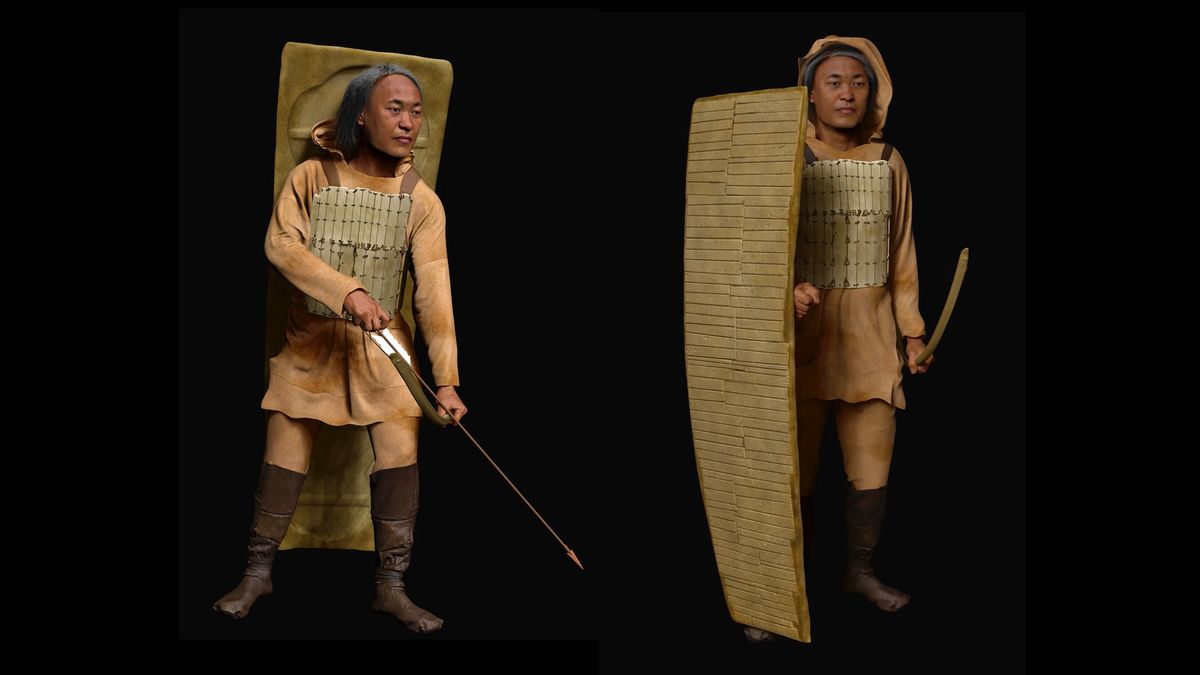A new reconstruction reveals the face, shield and weapons of a late Stone Age warrior, whose remains were found in a 4,000-year-old burial in Siberia.
The warrior’s burial was unearthed in 2004 during an archaeological survey of the Kerdugen area, about 87 miles (140 kilometers) east of the central Siberian city of Yakutsk in Russia’s Sakha Republic, also known as Yakutia.
His remains were discovered relatively near the surface, along with several arrowheads — indicating he once had a bow, although this has since rotted away — and plates of animal bone that would have formed a large shield. Radiocarbon dating determined the grave was about 4,000 years old.
Work on the reconstruction started in 2023, and the model recently went on display in the archaeology museum at the North-Eastern Federal University in Yakutsk, according to a translated report by the government-owned TASS news agency.
Related: 45 amazing facial reconstructions, from Stone Age shamans to King Tut
Stone Age remains
An examination of the man’s remains suggested he was about 5 feet 5 inches (165 centimeters) tall, and that he died between the ages of 40 and 50, making him elderly for a person in the late Stone Age.
The shape of his skull suggested he had the same ethnicity as people native to Siberia’s Arctic regions, and healed injuries on his bones suggested he had lived a very active and combative life — possibly the life of a warrior and archer.
To create a reconstruction based on the man’s skull, researchers used photogrammetry, which involves knitting together many digital images to make a virtual 3D model. They also used techniques for creating faces from skulls that were pioneered by the Soviet anthropologist Mikhail Gerasimov.
The researchers also reconstructed the large shield. It was originally made from plates of animal bone, probably from a type of elk called an Altai wapiti (Cervus canadensis sibiricus), that seem to have been glued onto a leather base.
The archaeologists also found fragments from arrowheads stuck into six of the bone plates, which indicated the shield had protected its user in battle.
Siberian Stone Age
The warrior was from Yakutia’s prehistoric Ymyyakhtakh culture, which has left distinctive pottery and other artifacts throughout the region.
The Ymyyakhtakh people were Neolithic — from the “New Stone Age” — which in some areas implies farmers; but in this case the Ymyyakhtakh were nomadic hunter-gatherers who used advanced tools, weapons and materials.
TASS reported that the burial in the Kerdugen area had been unusually well-preserved.
The warrior’s grave also held fragments of bones from a second human body, which may be evidence that a human sacrifice took place during the ancient burial ceremony — possibly even accompanied by ritual cannibalism, signs of which have been reported at other ancient ritual sites in Siberia.
